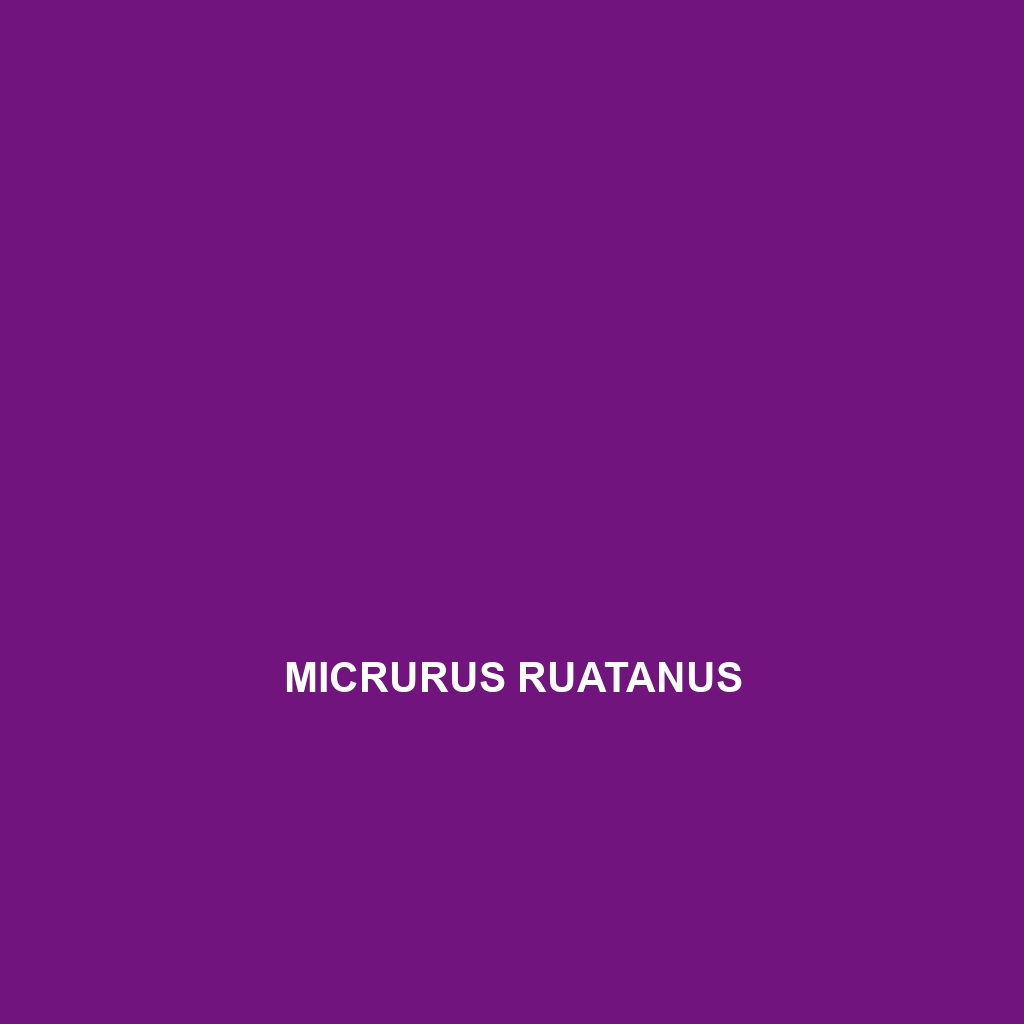Common Name
Micrurus ruatanus
Scientific Name
Micrurus ruatanus
Habitat
The Micrurus ruatanus, commonly known as the Ruatan coral snake, primarily inhabits various regions characterized by tropical climates. This species is predominantly found in the rainforests of the Bay Islands of Honduras, with its range extending to adjacent habitats including subtropical forests and mangrove swamps. The Ruatan coral snake is typically located in areas with dense vegetation which provides both cover and abundant prey. These snakes are also occasionally observed in savannas, showcasing their adaptability to different environmental conditions. The humidity and temperature levels of its habitat play a significant role in the behavioral patterns of Micrurus ruatanus, as they thrive in warm, moist environments that support their ectothermic physiology.
Physical Characteristics
Micrurus ruatanus is easily identifiable due to its striking coloration and distinctive patterns. Adult snakes typically grow to lengths of 60 to 80 cm (approximately 24 to 31 inches), making them relatively small compared to other snake species. The coloration consists of vivid bands of black, yellow, and red, with the yellow being particularly prominent. This aposematic coloration serves as a warning to potential predators about the snake’s venomous nature. Unique features such as their slender body shape and small head enable Micrurus ruatanus to navigate through tight spaces within vegetation, facilitating both hunting and evasion from threats. Their scales are glossy and smooth, further adding to their elegance.
Behavior
Diet
The diet of Micrurus ruatanus primarily consists of small reptiles and amphibians, rendering it a carnivore. These snakes utilize their potent venom to subdue prey, which includes lizards and sometimes small mammals. As skilled ambush predators, they wait for the right moment to strike, ensuring a successful hunt. Their metabolic processes are adapted to their diet, allowing them to thrive on infrequent meals, which is beneficial given their secretive nature.
Reproduction
The reproductive cycle of Micrurus ruatanus typically occurs during the rainy season, which is believed to enhance the survival rate of the offspring due to increased food availability. After mating, females lay clutches of 4 to 10 eggs in concealed locations, such as beneath rocks or decaying vegetation. The incubation period lasts for approximately 60 days, after which the hatchlings emerge. These young snakes are already capable of fending for themselves, displaying the same dietary preferences as adults. Parental care is absent, as the female departs shortly after laying eggs, allowing the offspring to independently navigate their environment.
Conservation Status
The conservation status of Micrurus ruatanus is currently assessed as Vulnerable on the IUCN Red List. Habitat destruction due to deforestation and human encroachment poses significant threats to their population. Additionally, the illegal pet trade has resulted in a decline in numbers, exacerbating concerns for their long-term survival. Conservation initiatives focusing on habitat protection and promoting awareness about the ecological importance of this species are essential to mitigate these challenges and ensure their continued existence.
Interesting Facts
Micrurus ruatanus is often overshadowed by more famous venomous species; however, it boasts several intriguing characteristics. For instance, their venom is neurotoxic and can be highly effective, but instances of bites to humans are rare due to their reclusive nature and preference for avoiding confrontation. Additionally, the bright coloration of this snake not only plays a part in its warning system but also serves as a form of camouflage among the vibrant flora of its rainforest habitat. Their ability to blend into their environment showcases the adaptation skills of this unique species.
Role in Ecosystem
Micrurus ruatanus plays a critical ecological role as both a predator and prey within its habitat. By controlling the populations of small reptiles and amphibians, it helps maintain the balance of the ecosystem. This species also serves as a food source for larger predators, showcasing its place within the food web. Their presence contributes to the health of the rainforest ecosystem, highlighting the importance of preserving their habitats to ensure biodiversity remains intact. As a predator, Micrurus ruatanus also assists in promoting the resilience of their prey populations, fostering a dynamic and balanced ecological environment.
